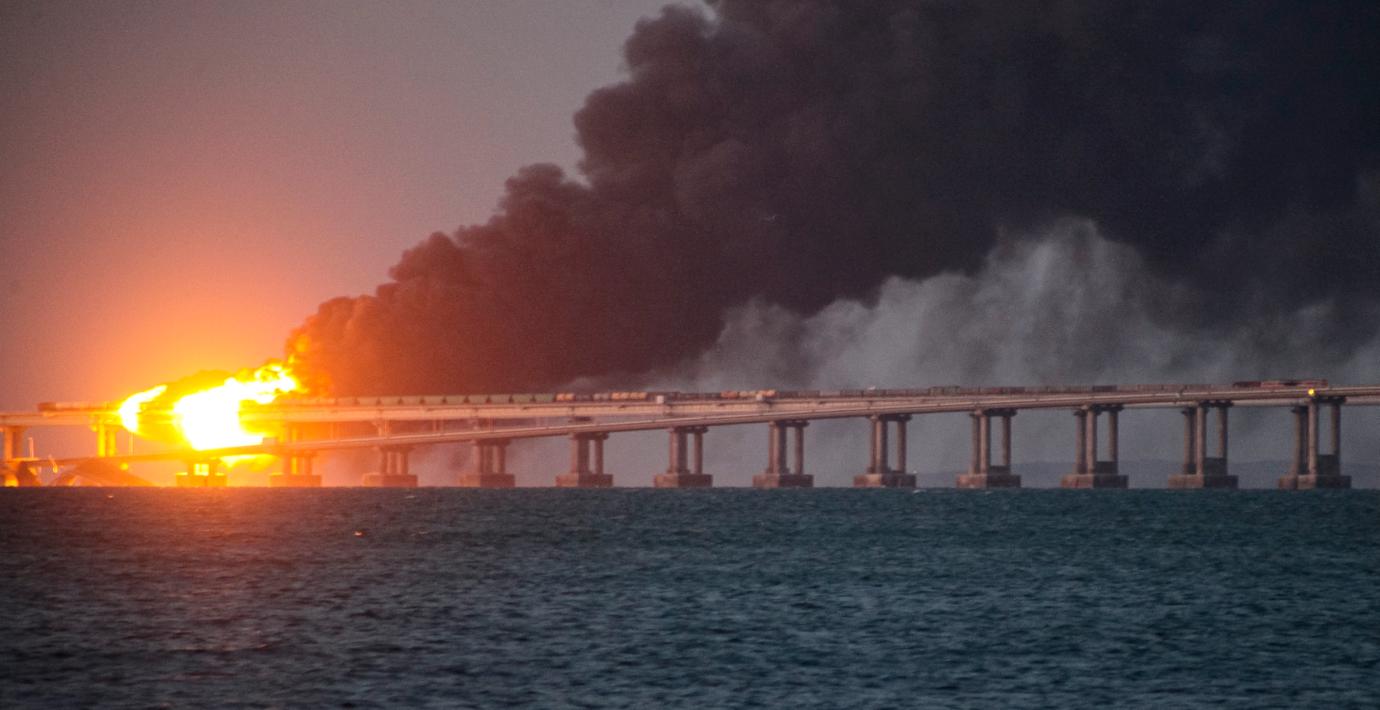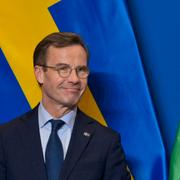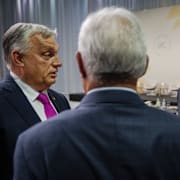
Polens president: Vet inte om Ukraina kan återta Krym
Polens president Andrzej Duda kritiseras hårt i hemlandet efter att ha sagt att han inte är säker på att Ukraina kan ta tillbaka kontrollen över den ryskockuperade Krymhalvön.
– Jag vet inte om Ukraina kommer ta tillbaka Krym, men jag tror att man tar tillbaka Donetsk och Luhansk, sa han i en intervju med en polsk Youtubekanal på fredagen.
Ukrainas ambassadör i Polen Vasyl Zvarych skriver på X att ”Krym är och förblir ukrainskt” och den polska parlamentarikern Roman Giertych kallar det en ”otroligt dum kommentar”.

Intervjun med Duda (polska)
bakgrund
Krymhalvön
Wikipedia (en)
Crimea ( kry-MEE-ə) is a peninsula in Eastern Europe, on the northern coast of the Black Sea, almost entirely surrounded by the Black Sea and the smaller Sea of Azov. The Isthmus of Perekop connects the peninsula to Kherson Oblast in mainland Ukraine. To the east, the Crimean Bridge, constructed in 2018, spans the Strait of Kerch, linking the peninsula with Krasnodar Krai in Russia. The Arabat Spit, located to the northeast, is a narrow strip of land that separates the Syvash lagoons from the Sea of Azov. Across the Black Sea to the west lies Romania and to the south is Turkey. The largest city is Sevastopol. The region has a population of 2.4 million, and has been under Russian occupation since 2014.
Called the Tauric Peninsula until the early modern period, Crimea has historically been at the boundary between the classical world and the steppe. Greeks colonized its southern fringe and were absorbed by the Roman and Byzantine Empires and successor states while remaining culturally Greek. Some cities became trading colonies of Genoa, until conquered by the Ottoman Empire. Throughout this time the interior was occupied by a changing cast of steppe nomads. In the 14th century, it became part of the Golden Horde; the Crimean Khanate emerged as a successor state. In the 15th century, the Khanate became a dependency of the Ottoman Empire. Lands controlled by Russia and Poland-Lithuania were often the target of slave raids during this period. In 1783, the Russian Empire annexed Crimea after an earlier war with Turkey. Crimea's strategic position led to the 1854 Crimean War and many short lived regimes following the 1917 Russian Revolution. When the Bolsheviks secured Crimea, it became an autonomous soviet republic within the Russian Soviet Federative Socialist Republic. It was occupied by Germany during World War II. When the Soviets retook it in 1944, Crimean Tatars were ethnically cleansed and deported under the orders of Joseph Stalin, in what has been described as a cultural genocide. Crimea was downgraded to an oblast in 1945. The USSR transferred the oblast to the Ukrainian Soviet Socialist Republic on the 300th anniversary of the Pereyaslav Treaty in 1954.
After Ukrainian independence in 1991, the central government and the Republic of Crimea clashed, with the region being granted more autonomy. The Soviet fleet in Crimea was also in contention, but a 1997 treaty allowed Russia to continue basing its fleet in Sevastopol. In 2014, the peninsula was occupied by Russian forces and annexed by Russia, but most countries recognize Crimea as Ukrainian territory.
Omni är politiskt obundna och oberoende. Vi strävar efter att ge fler perspektiv på nyheterna. Har du frågor eller synpunkter kring vår rapportering? Kontakta redaktionen



